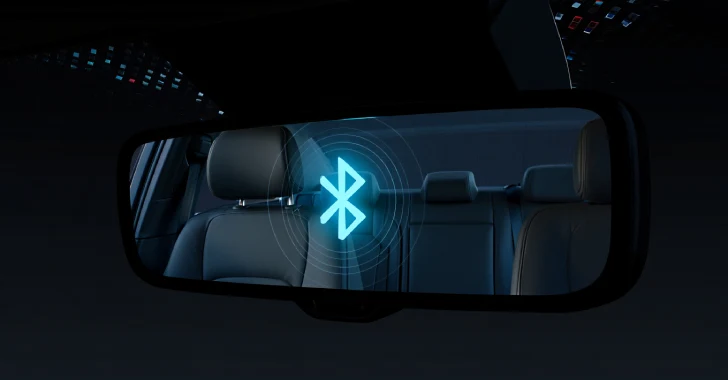
PerfektBlue Bluetooth Vulnerabilities Expose Millions of Vehicles to Remote Code Execution
Bluetooth Vulnerabilities Expose Millions of Vehicles to Remote Code Execution
The modern vehicle is a sophisticated network of interconnected systems, with Bluetooth connectivity often serving as a critical gateway for infotainment, communication, and even vital vehicle functions. This ubiquitous technology, while offering convenience, introduces potential attack vectors for determined adversaries. Recent findings by cybersecurity researchers have unveiled a significant threat, dubbed PerfektBlue, which leverages a chain of vulnerabilities in a widely used Bluetooth software stack. This flaw directly impacts millions of vehicles from several major manufacturers, potentially allowing for remote code execution (RCE) and posing a severe risk to automotive security.
Understanding the PerfektBlue Threat
PerfektBlue refers to a set of four distinct security flaws discovered within OpenSynergy’s BlueSDK Bluetooth stack. BlueSDK is a core component integrated into the infotainment and connectivity systems of numerous vehicles. The danger lies in the ability for these individual vulnerabilities to be chained together, forming a potent exploit capable of achieving Remote Code Execution (RCE) on affected vehicles. This means an attacker could, with successful exploitation, execute arbitrary code on the vehicle’s system without physical access, potentially gaining deep control over critical functions.
The Impact: Millions of Vehicles at Risk
The ramifications of PerfektBlue are substantial due to the widespread adoption of OpenSynergy’s BlueSDK. Researchers indicate that this vulnerability chain could affect millions of transportation vehicles across various vendors. Specifically, at least three major automakers have been identified as having vehicles susceptible to these exploits. The ability to run arbitrary code remotely on a vehicle could lead to a range of devastating scenarios, from data exfiltration and privacy breaches to direct manipulation of vehicle systems, potentially compromising safety and operational integrity.
Technical Overview of the Vulnerabilities (PerfektBlue)
While the specific details of each of the four vulnerabilities comprising PerfektBlue are complex and often proprietary, they collectively target weaknesses in the Bluetooth communication protocols and handling within the BlueSDK stack. These types of flaws typically involve issues such as:
- Improper handling of malformed Bluetooth packets, leading to buffer overflows or memory corruption.
- Authentication bypasses or weak access controls within the Bluetooth stack’s services.
- Logic errors that allow for privilege escalation or unauthorized data access.
- Denial-of-service vulnerabilities that could disrupt critical vehicle systems.
When combined, these individual weaknesses can be used to bypass security measures and ultimately inject and execute malicious code. It’s crucial for affected manufacturers and their suppliers to provide detailed advisories and patches for the specific CVEs involved. While specific CVEs were not listed in the provided source, similar vulnerabilities in Bluetooth stacks often include:
- CVE-YYYY-XXXXX (Placeholder for potential RCE vulnerability, example)
- CVE-YYYY-XXXXY (Placeholder for potential buffer overflow, example)
Organizations should monitor the National Vulnerability Database (NVD) and vendor advisories for the official release of the PerfektBlue CVEs, which will provide more granular details on the nature of these flaws.
Remediation Actions for Affected Stakeholders
Addressing the PerfektBlue vulnerabilities requires a concerted effort from vehicle manufacturers, suppliers, and vehicle owners. Immediate and proactive measures are essential to mitigate the significant risks:
- For Vehicle Manufacturers:
- Work closely with OpenSynergy to obtain and integrate patched versions of the BlueSDK.
- Prioritize the development and swift deployment of over-the-air (OTA) software updates to all affected vehicle models.
- Issue clear and comprehensive security advisories to vehicle owners and the public.
- Conduct thorough internal audits of all Bluetooth-enabled systems and components.
- For OpenSynergy (BlueSDK Developer):
- Expedite the development and release of robust patches for all identified vulnerabilities.
- Provide detailed technical advisories to all licensees and partners.
- Strengthen internal security development lifecycle (SDL) processes.
- For Vehicle Owners:
- Stay informed about recall notices and software update availability from their vehicle manufacturer.
- Install all recommended software updates as soon as they become available.
- Exercise caution with Bluetooth pairings and only connect to trusted devices.
- Consider disabling Bluetooth when not in use, if practical and safe to do so.
Detection and Mitigation Tools
While direct user-level tools for sophisticated Bluetooth vulnerability detection in vehicles are limited, professional security teams and manufacturers utilize specialized equipment and software for analysis and mitigation.
| Tool Name | Purpose | Link |
|---|---|---|
| Bluetooth Stack Analyzers (e.g., Ellisys Bluetooth Vanguard) | Protocol analysis, packet capture, and vulnerability research on Bluetooth interfaces. | Ellisys Website (Example) |
| Software Composition Analysis (SCA) Tools | Identify known vulnerabilities in third-party libraries like BlueSDK used within vehicle firmware. | Synopsys Blackduck (Example) |
| Automotive Penetration Testing Services | Professional security firms conducting in-depth vulnerability assessments of vehicle systems. | (Varies by vendor, search “Automotive Cybersecurity Services”) |
| Firmware Analysis Tools (e.g., Ghidra, IDA Pro) | Reverse engineering and static/dynamic analysis of embedded vehicle firmware to identify vulnerabilities. | Ghidra Project |
Conclusion
The PerfektBlue vulnerabilities in OpenSynergy’s BlueSDK represent a critical cybersecurity challenge for the automotive industry. The potential for remote code execution on millions of vehicles underscores the paramount importance of robust security practices in every layer of connected vehicle architecture. Proactive patching, seamless software update mechanisms, and ongoing vigilance from both manufacturers and vehicle owners are essential to safeguard against these sophisticated threats and ensure the safety and integrity of our transportation systems.





